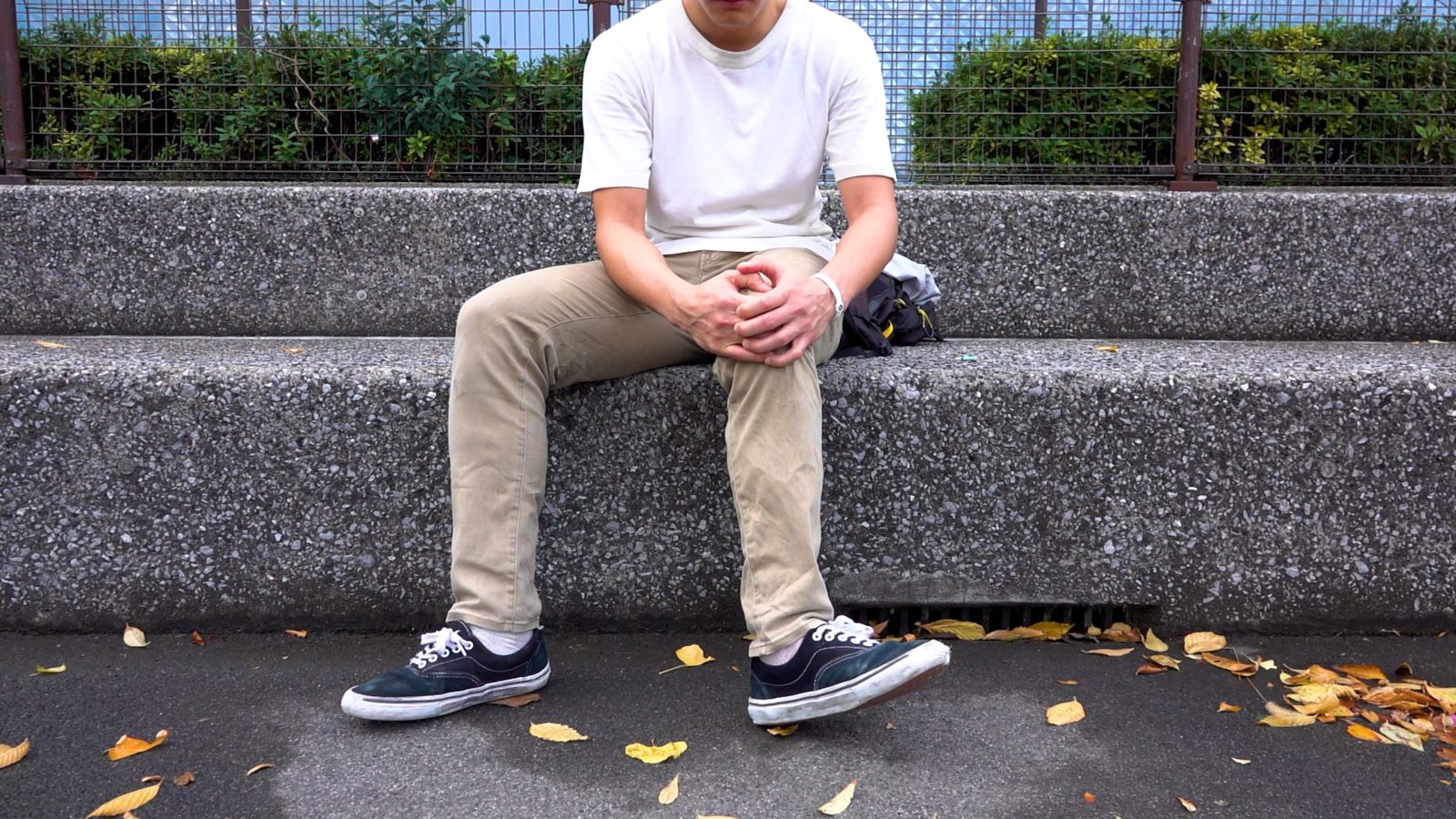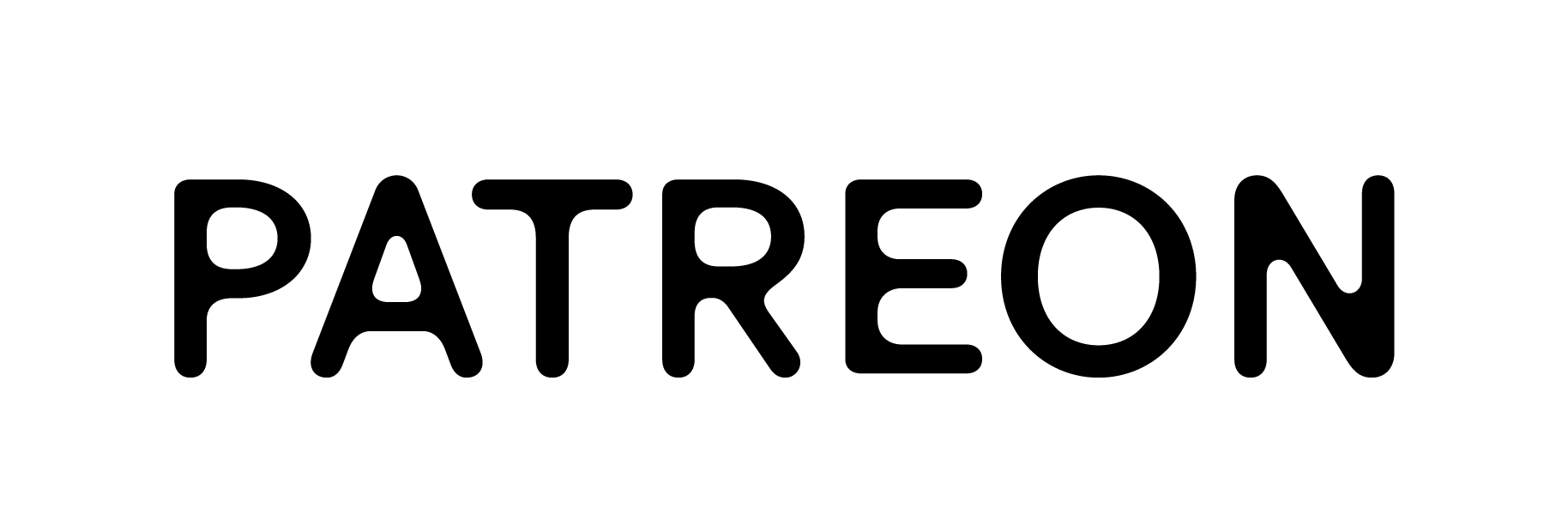"Scoop" is a common expression in skateboarding, but what exactly is it, and how is it different from pushing or pulling the board? Once you know their difference and can combine them, you should be able to rotate your board more efficiently (with some exceptions, such as late flips). In this video, we will see the science behind how the board spins and the secret to keeping the board under the center of gravity.
Summary
Two ways to spin a skateboard
You can spin the skateboard by popping the tail while shifting your weight off the board and scooping the tail by twisting your ankle/hip joint. You can spin the board with small energy by combining them.
Tricks become easier while moving
While you should get your weight off your board in some tricks, you will fall if you keep your weight on one side while standing still. Make sure to practice tricks while moving as you can keep your weight on one side.
Classification of forces that spin the board
Two forces to spin the board
Let's take a Shove-it as an example. You can Shove-it by both scooping and swinging the leg. Do you see any difference between these Shove-its? I'm spinning the board by scooping in the first one. (it might be hard to tell from this angle) I'm actually turning my ankle inward. In the next one, I'm swinging my back foot and generating a horizontal force without scooping.
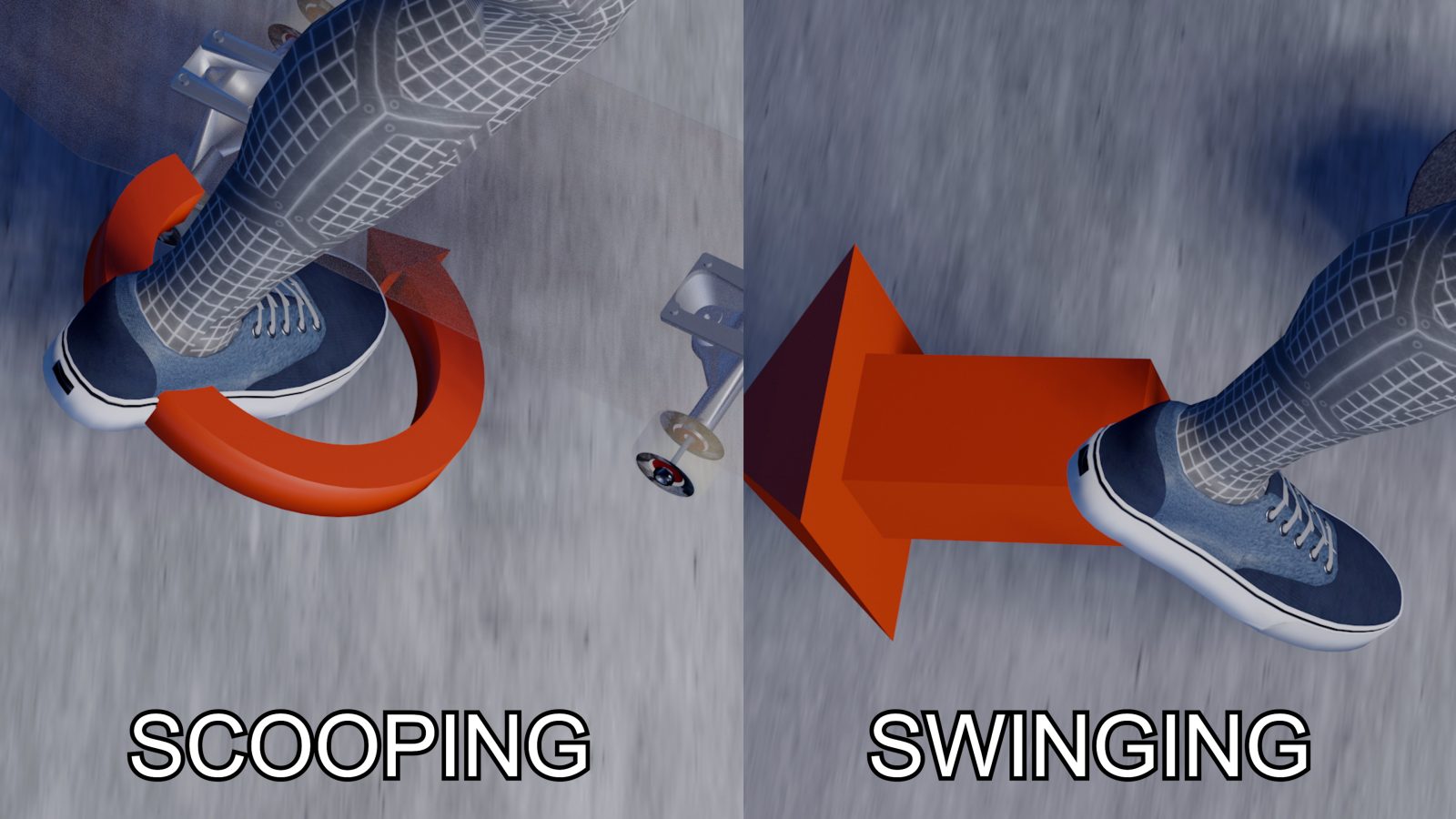
Swinging motion
How swinging motion affects Shove-its
In a Backside Shove-it, it's simple; you have to simply swing your back foot backward. But Shove-its suddenly become difficult when you go for Frontside as your knee doesn't bend forward.

Spinning the board by shifting your weight
However, there are other ways to apply horizontal force to the board besides bending the knees. As explained in the previous video, if you try to pop the board straight down with your weight on the heel side, the point of action (the position of the tail) is on the toe side relative to your body's center of gravity. So, even if you think you are popping straight down, you will be applying a horizontal force forward.
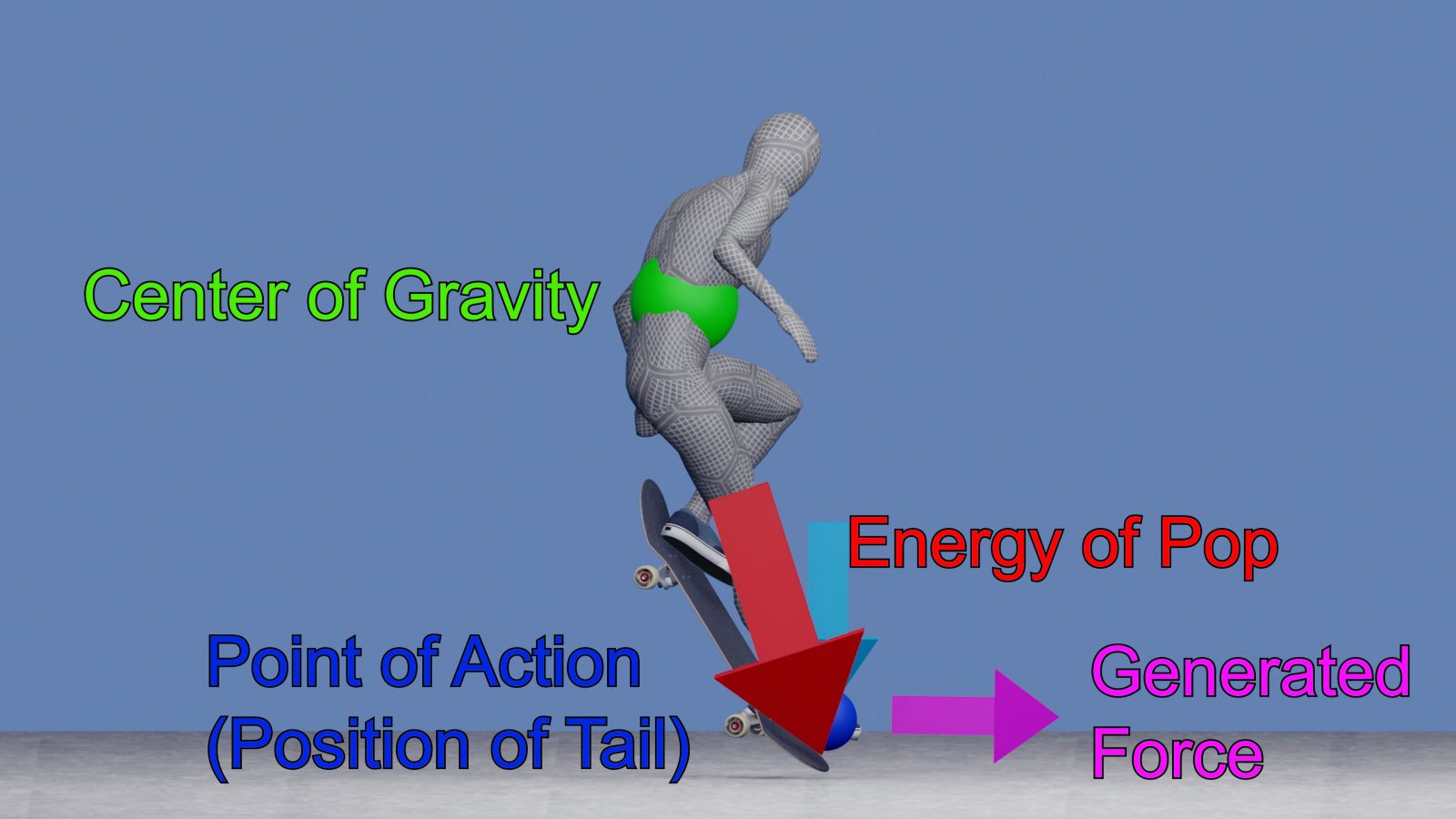
Demerit of spinning board by shifting weight
You may be able to spin the board Frontside by utilizing this concept. On the other hand, the problem is that you will lose height if you shift your weight too far off the board. The back foot not only provides rotation to the board but also plays a vital role in lifting the body. When your weight is directly above the board, you can receive 100% of the rebound force from the ground by applying a vertical downward force.

The meaning of scooping
If your center of gravity is TOO FAR OFF the board, however, rebound from the ground won't be able to lift your body back into the air effectively. This is when the scoop shines. It can help you stay over the board AND give the board rotation.
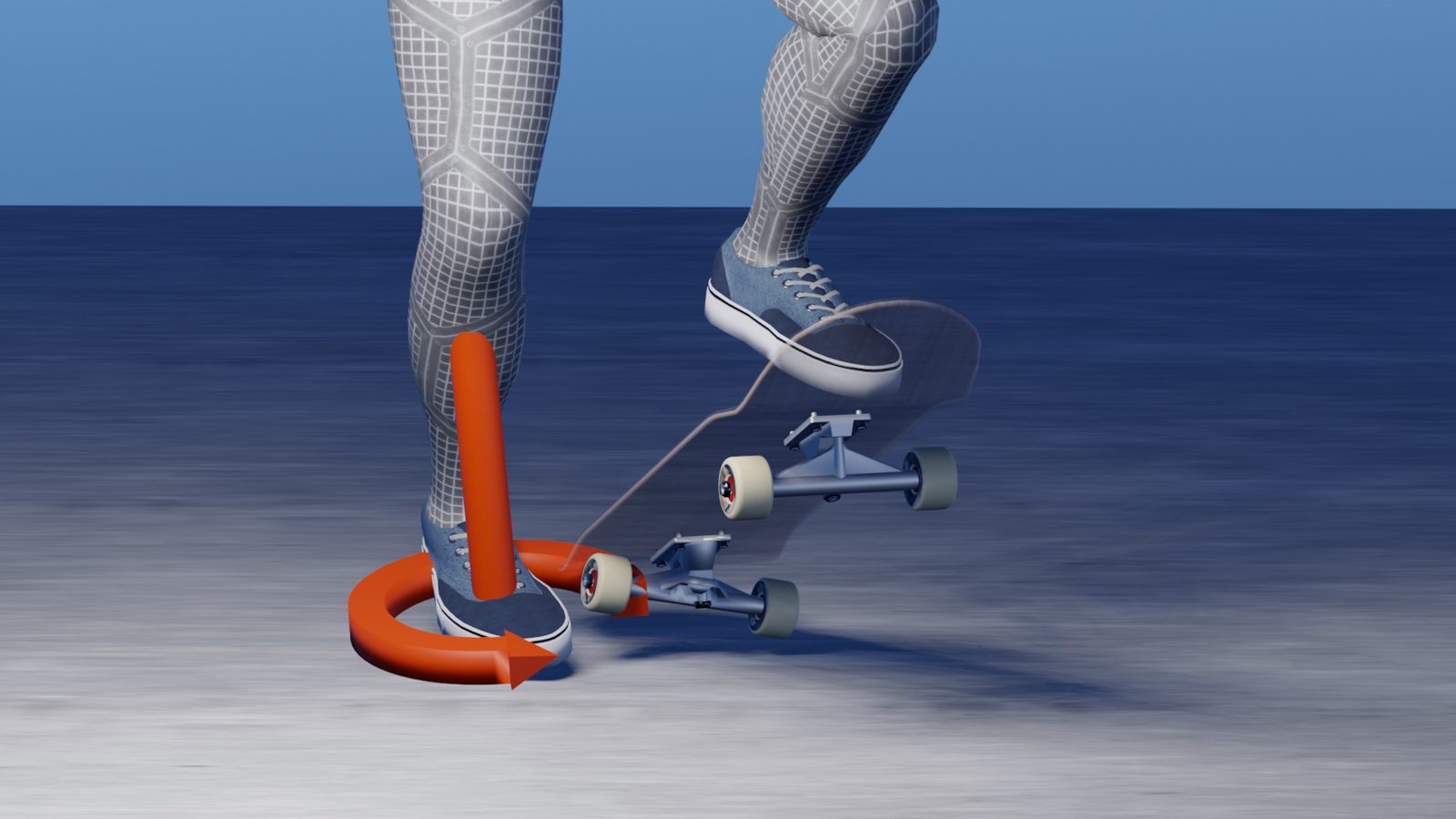
Scooping motion
Definition of scoop
Let's stop and think about this. We hear the expression "scooping" used in various tricks, but objectively, what exactly does it mean? Some of you may have different opinions, but at Whythetrick, we think of it as "Rotating the toes inward around a vertical axis (Z-axis).
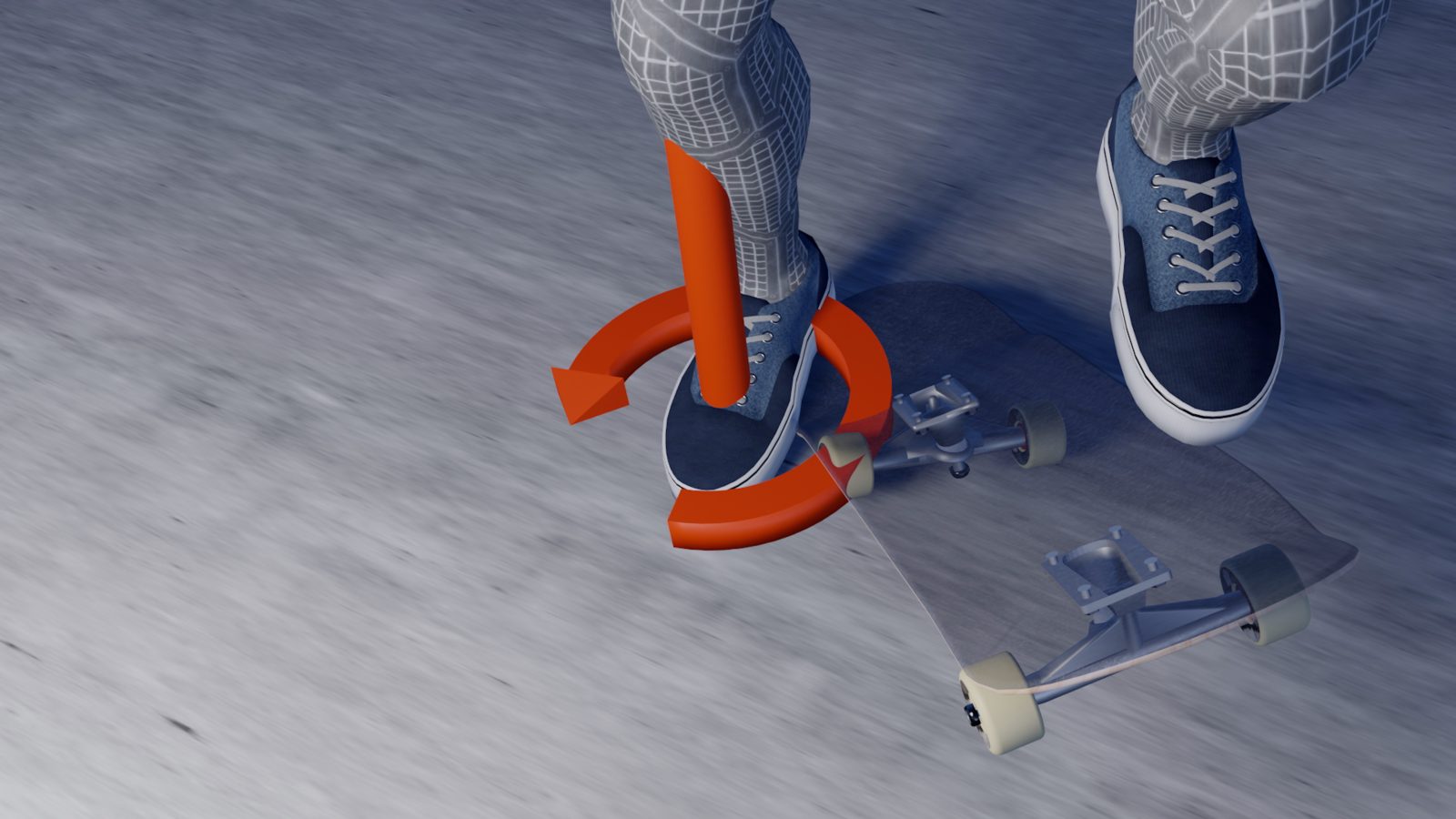
Directions of spin by scooping
This "scooping" motion is used in various tricks. In fact, you can use the same "scooping motion" to spin the board in completely different directions. For example, by scooping, everyone knows you can Treflip, which spins Backside. But that's not all; you can even Frontside 360 Pop Shove-it, which spins Frontside. Let's see why turning the toe inward spins the board both Frontside and Backside.

Treflipでのしゃくりの動作の例
In the case of a Treflip, you would put your back foot on the toe side of the tail and twist it inward. This pressurizes the toe-side wheel and spins the board Backside.
Please refer to the previous video for the details of how to Treflip. The most essential (and easy to forget) part of this trick is to spin the back toe inward around the vertical axis. In my case, I put my weight on the toe side. This causes two forces to work on the tail: the horizontal force from the weight shift and the rotational force by turning my back toe. Combining them allows me to spin my board with a small amount of energy.
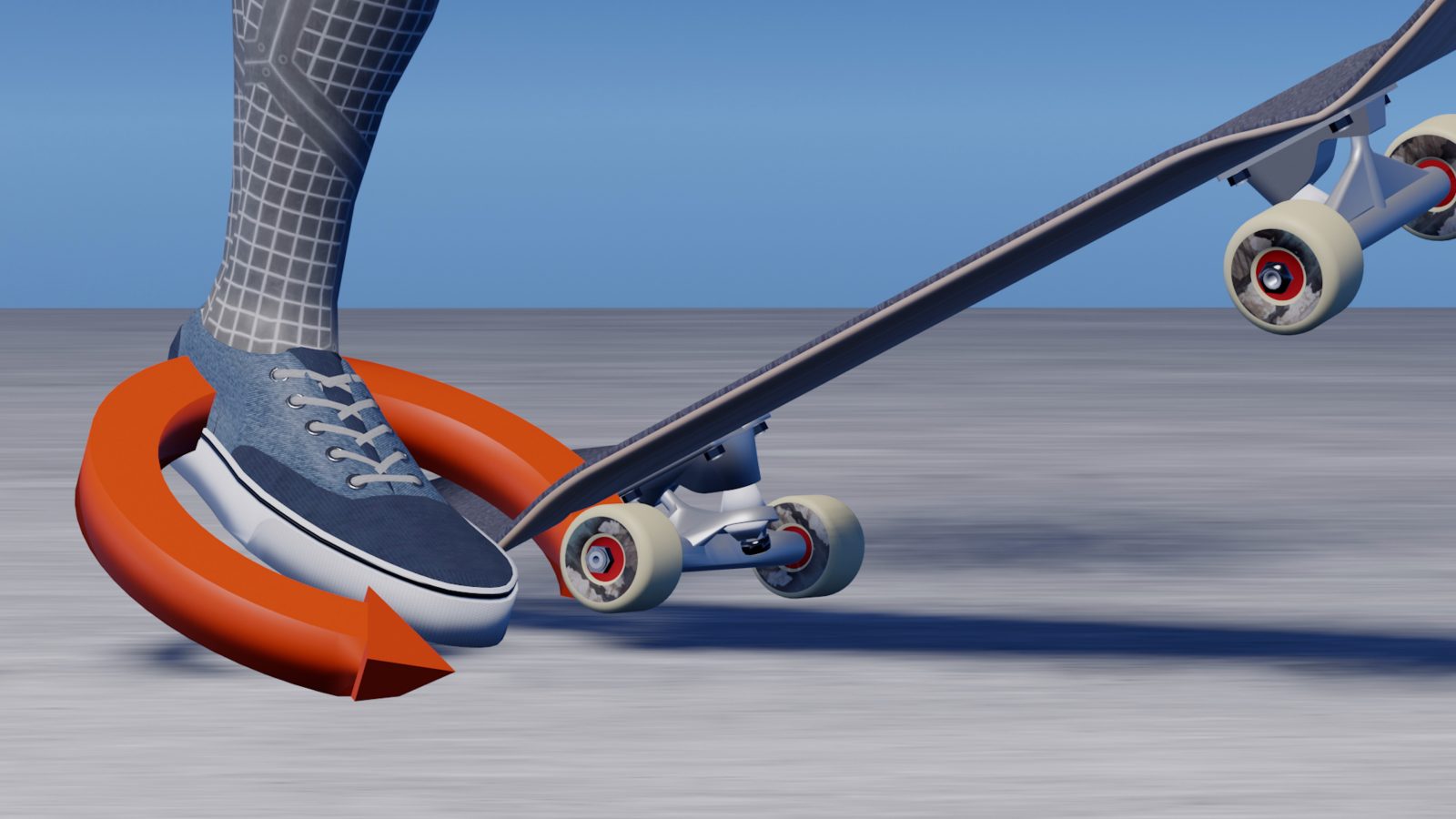
Scoop in frontside spin
Now, let's look at the Frontside rotation. If I place my foot on the heel side, opposite to Treflip, and spin it inward similarly, the board opens up and spins Frontside. My motion is the same, but the board reacts entirely differently.
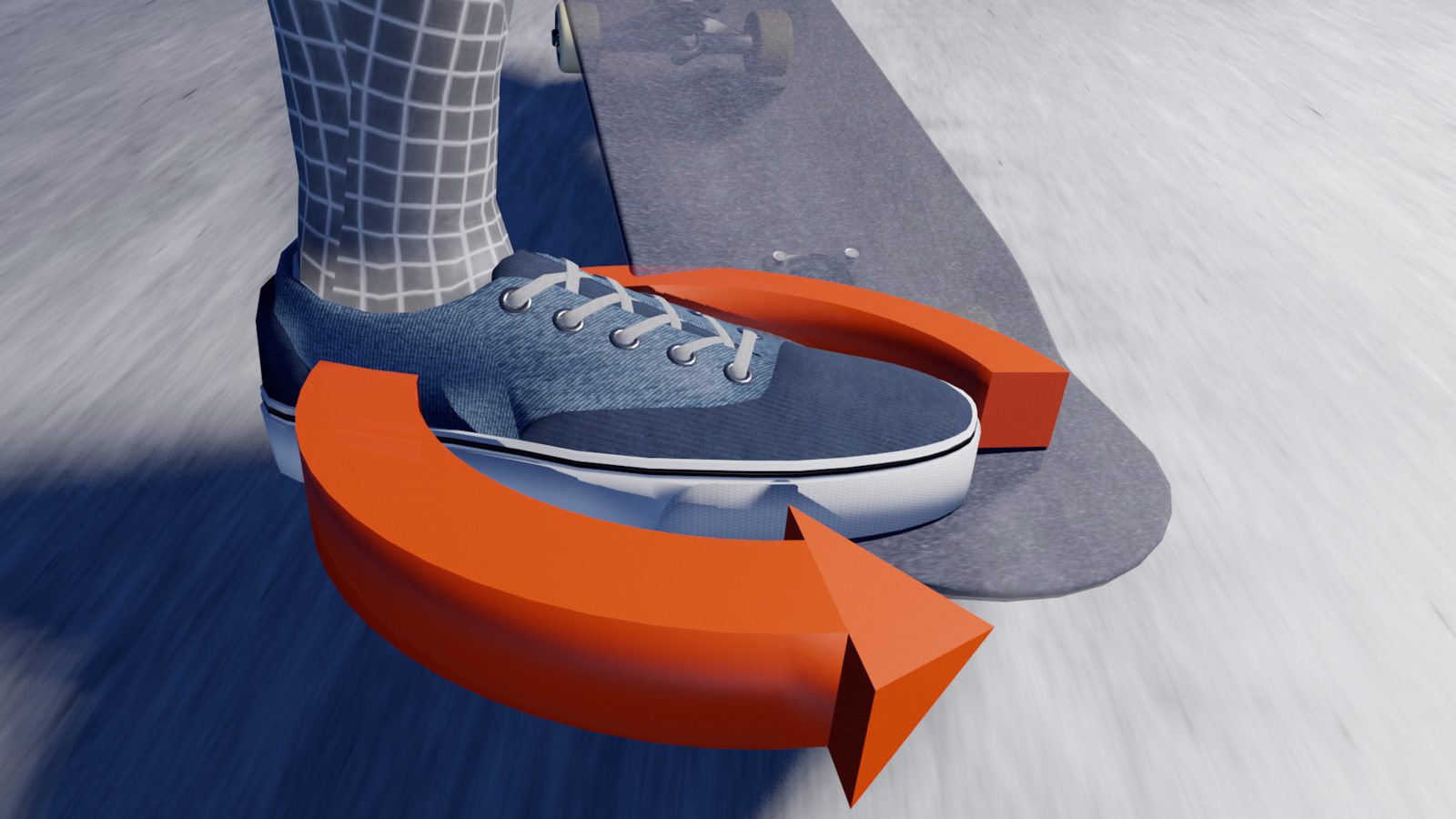
Scoop in frontside Pop Shove-its
Let's take a Frontside Pop Shove-it as an example. If you place your back foot on the heel side and turn the toes inward, the downward force generated by the body's extension, combined with the toe's rotation, will exert a spiraling downward force on the tail. This force should allow the tail to hit the ground hard and effectively spin the board.
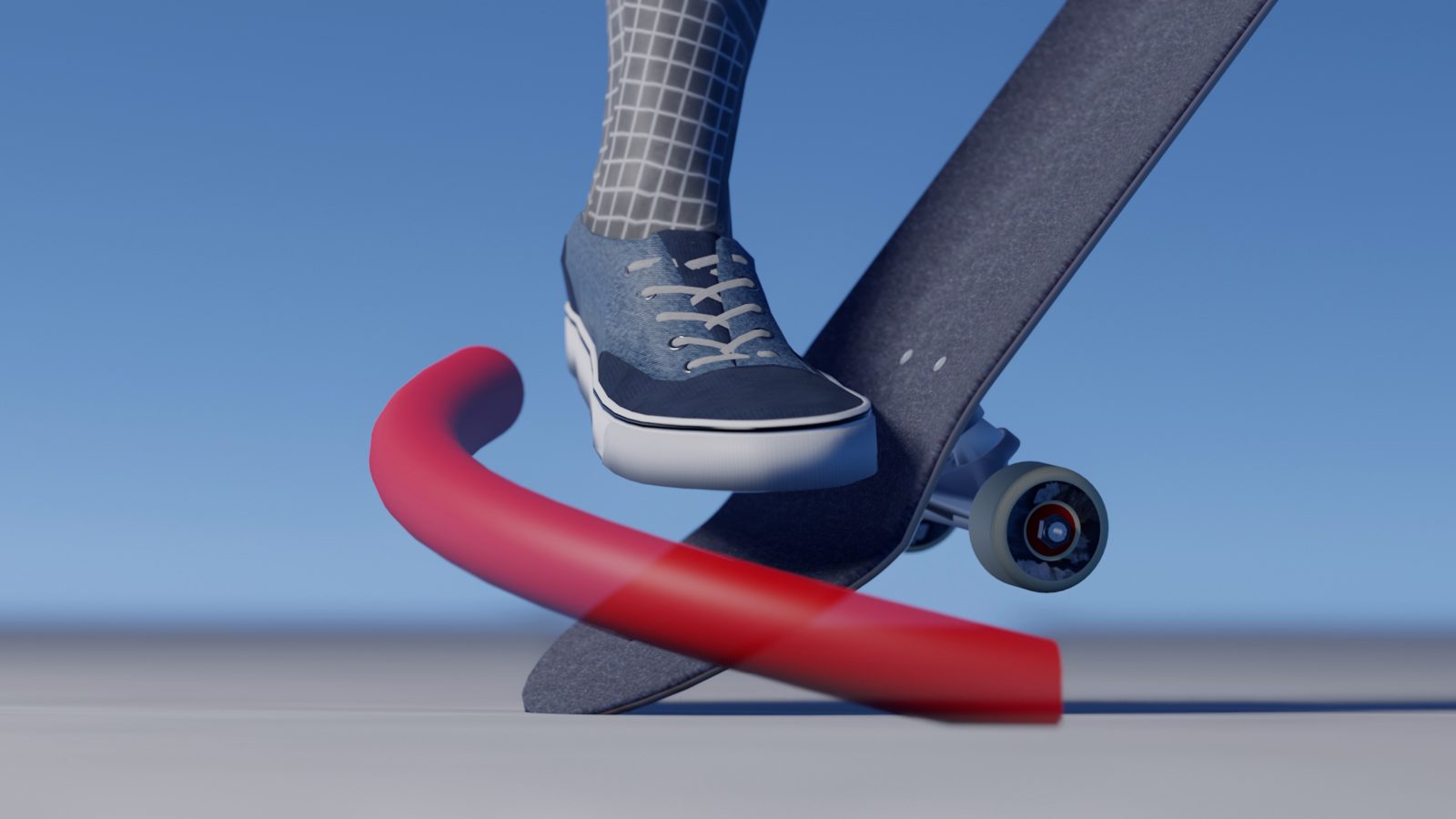
Points to keep in mind when practicing
Make sure to practice while moving
Now that we've sorted out the major elements that help you spin the board effectively, let's also look at the science of keeping the board under your body.
First things first: You should always practice tricks while moving, no matter how slow it is. It is not just my subjective assumption, but there are scientific reasons that support the importance of doing tricks while moving.
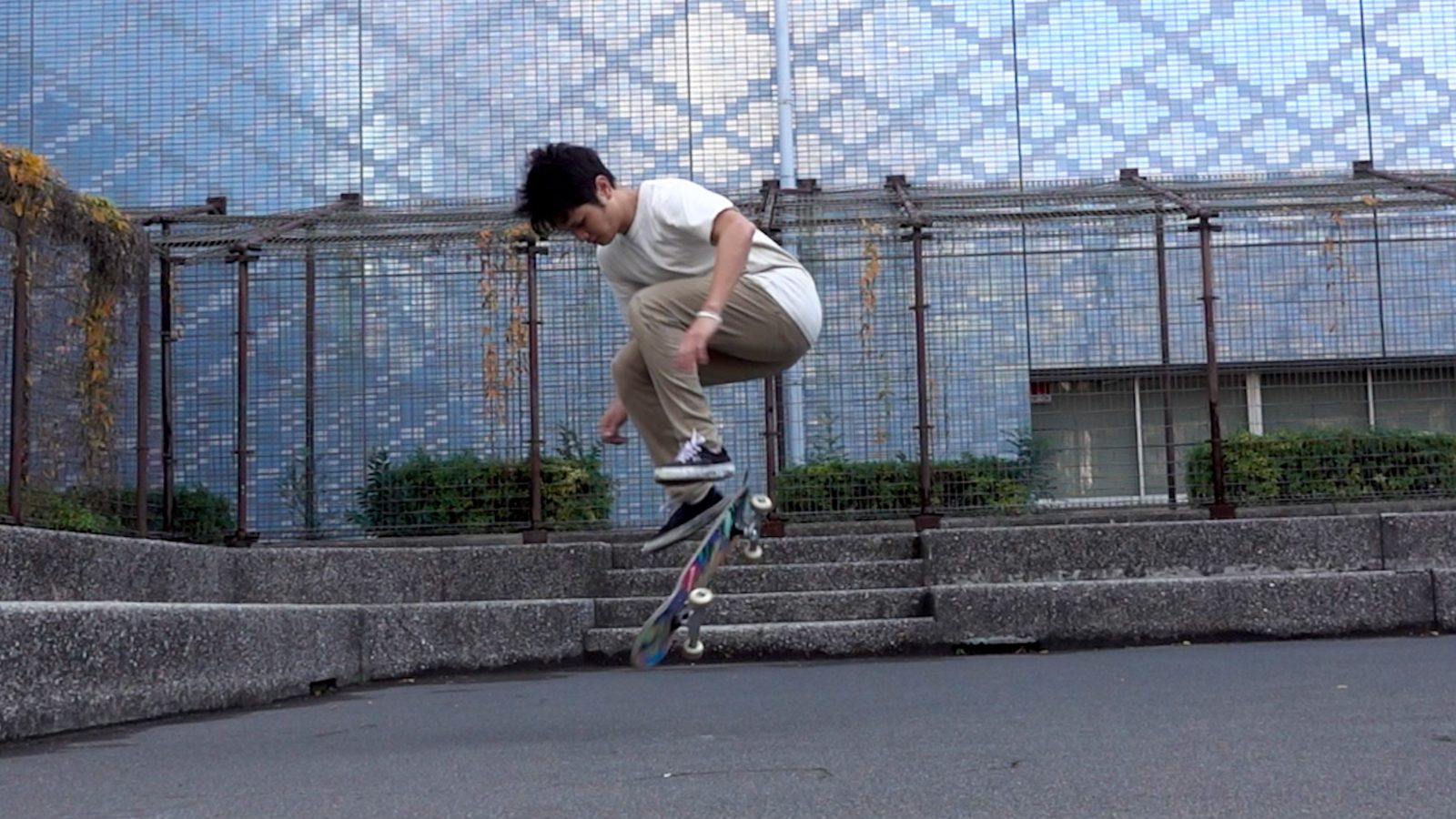
The board moves behind in frontside Pop Shove-its
Let's take a Frontside Pop Shove-it as an example again. In this trick, the board does not spin around its center but around the axle of the back truck. The weight of the board itself and the front truck swing out around the axle, causing the board to move heel side & in the direction of the tail.
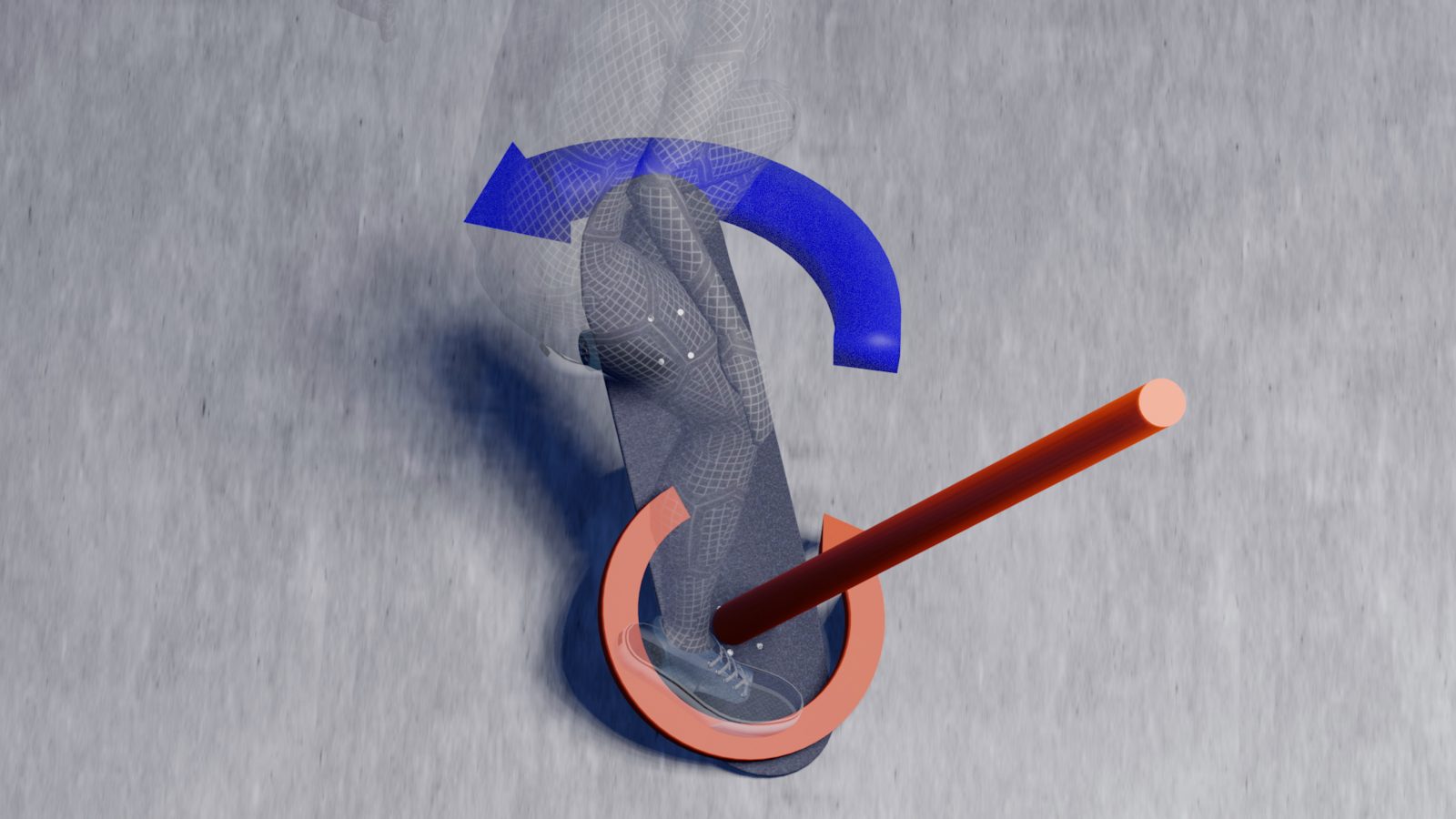
Reasons practicing while moving makes it easier
So, you need to find a way to move your body in the direction the board goes in order to keep it under the body. As mentioned earlier, having your weight on the heel side is one way. But this is also what makes this trick harder; you will fall if you keep your weight on the heel side while stationary. Meanwhile, while moving, you would turn in that direction without falling.
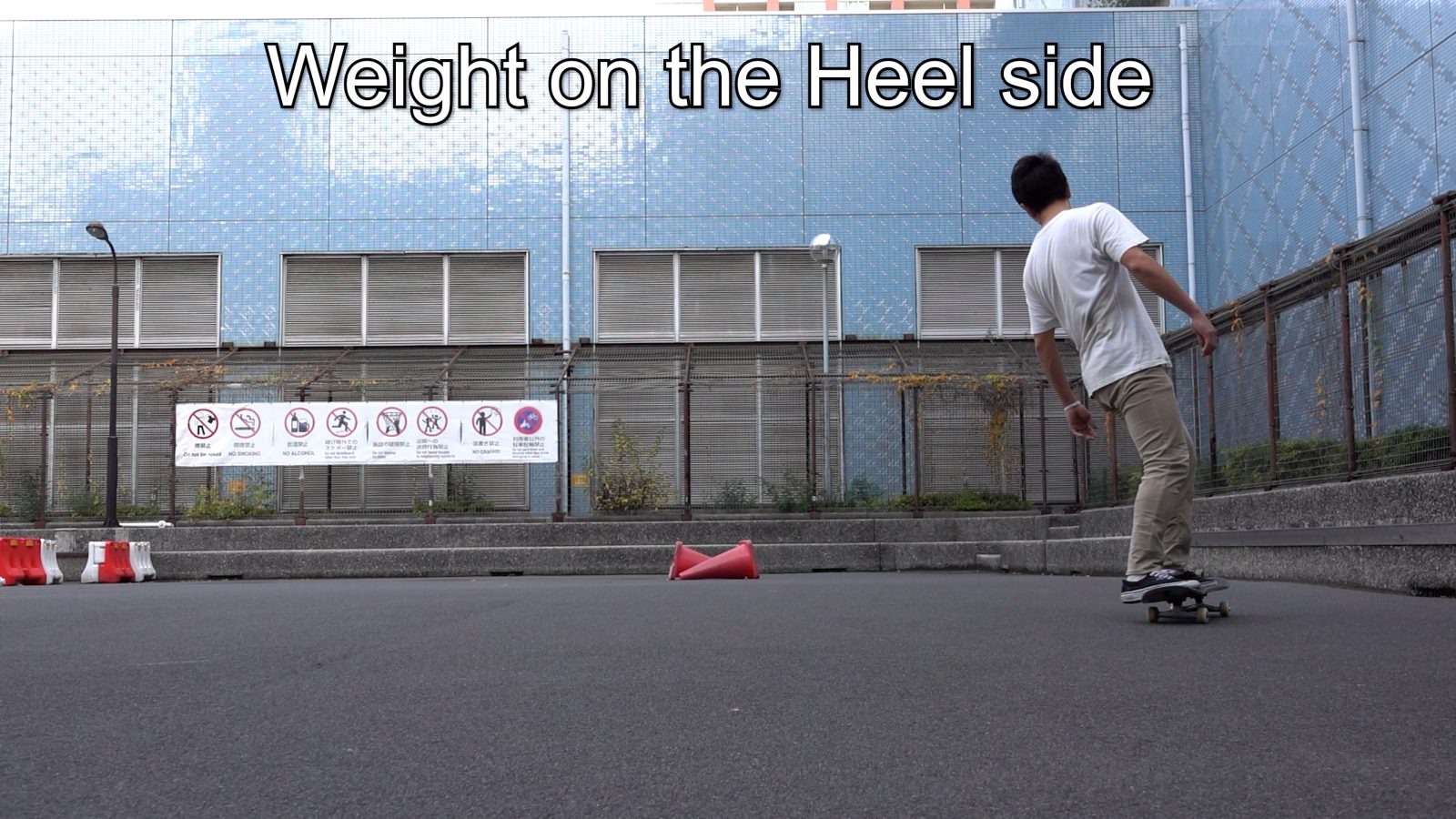
Avoid shifting weight too far
In the case of a Frontside Pop Shove-it, you should be lightly turning to the heel-side before popping. In a backside trick, you should be leaning to the toe side. But please don't get me wrong. Having your weight too far off the board decreases the height of your tricks. Plus, although shifting weight may help you spin your board, you don't necessarily have to emphasize it if you know how to spin your board by scooping.
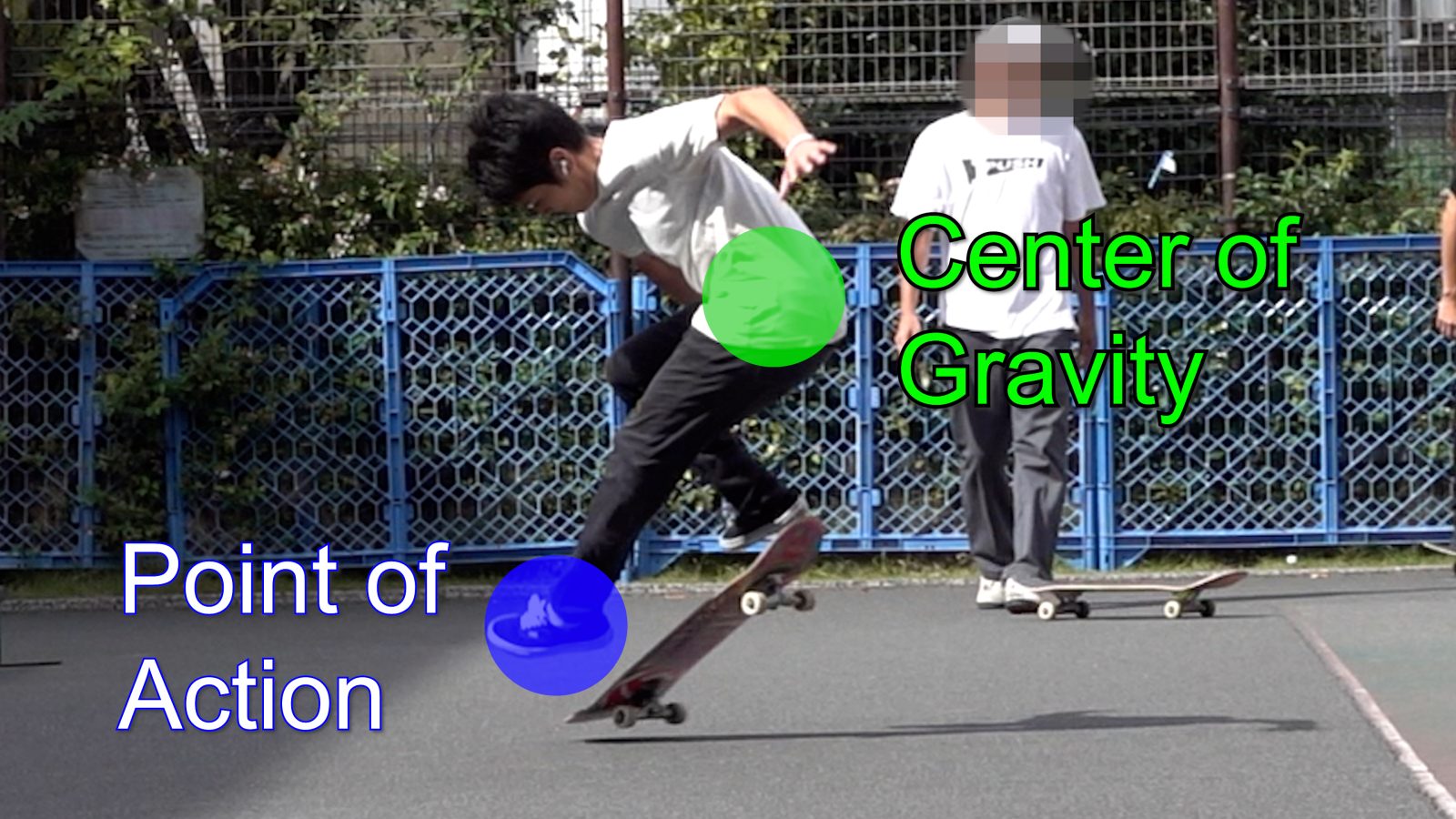
You can spin the board without shifting weight
As evidence, I'm going straightforward, but my board spins front in this case. So, combine the scooping motion to keep the height of the tricks when you need it.

Timing is key in the scoop
Scooping does not spin the board if you do it too early. So, wait to scoop until your body extends and the toe becomes the only part in contact with the board

The scooping motion and biomechanics
Body parts that can cause scoop
As to the mechanism of the human body, there are two body parts that can make the scooping motion: the ankle and the hip joint. For example, try rotating only the ankle with the knee fixed. You should be able to open and close your toes. This is what makes the scooping motion. Although I'm not exactly an expert in biomechanics, I assume the knee is not designed to turn around the vertical axis. So, if you think the scoop with the ankle is not strong enough, try adding the scooping motion by rotating your hip joint.
